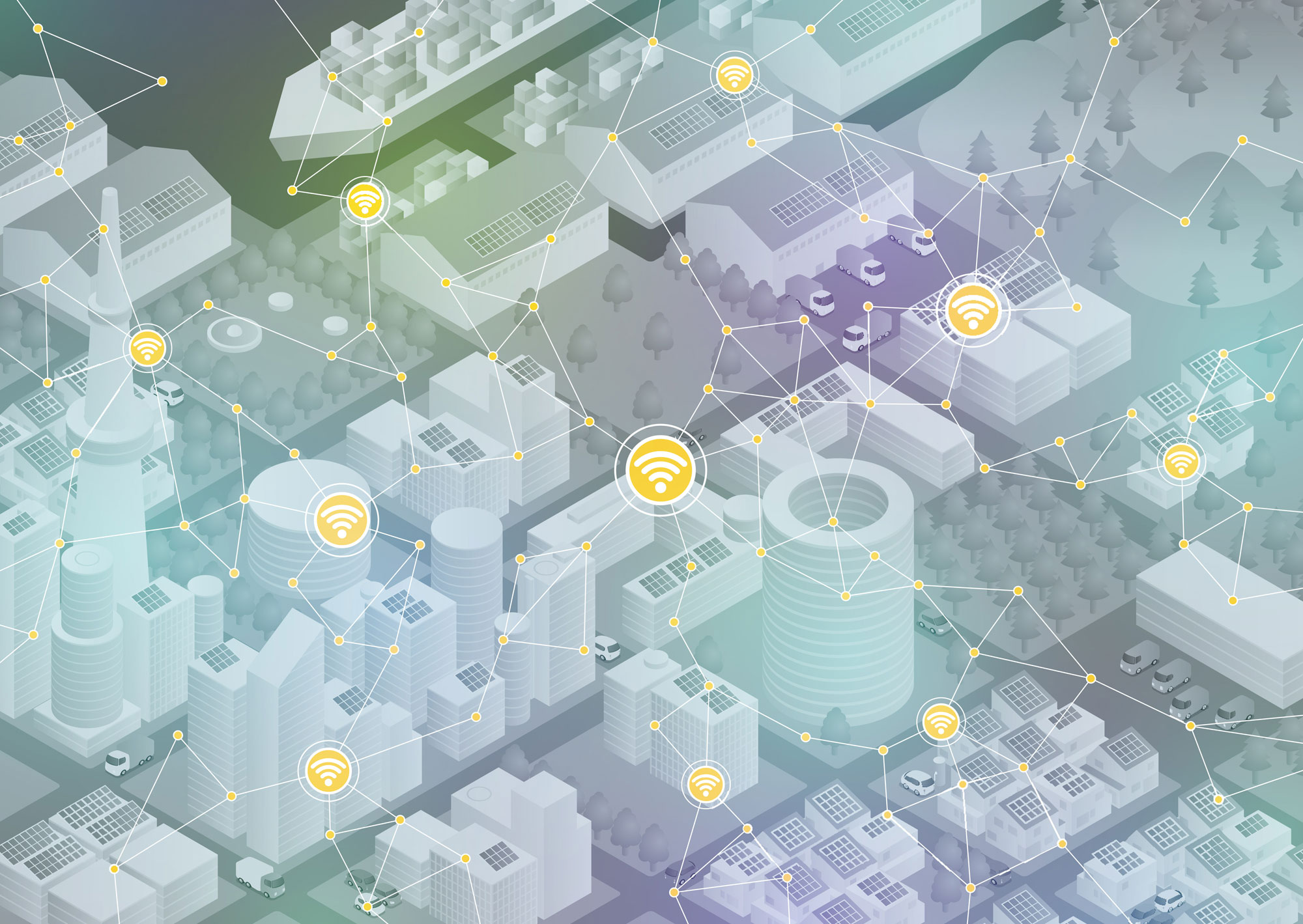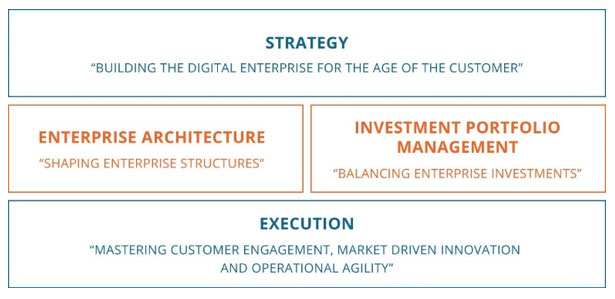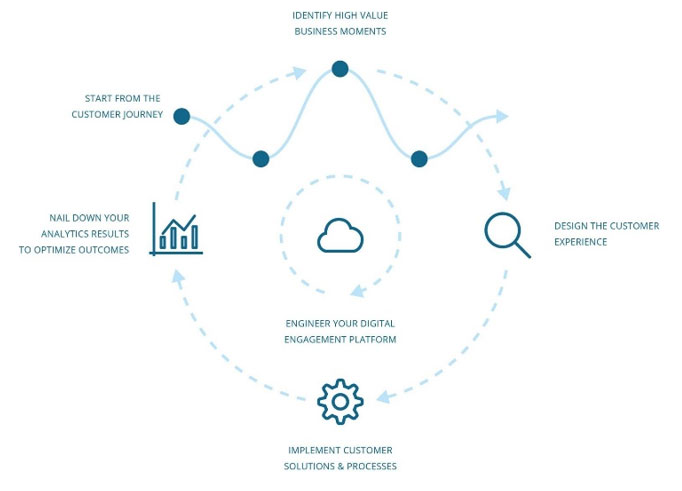Digital Transformation Utilities
Transformation Ahead for the Successful Energy Providers of the Future

For utilities, the foundation of the energy marketplace is changing. Increasingly, business models and operational approaches of the past are being stretched to their limits and a tipping point has been reached.
What does this mean for energy providers looking to remain successful in the future?
Providers face a market in turbulence with a range of disruptive forces: increasing adoption of microgeneration in Germany, regulatory mandates encouraging competition in the United Kingdom, smart meter rollout programs across Europe and the implementation of a new federal clearing house in Belgium to name just a few. The landscape for providers is being reshaped by changing consumer preferences, technological innovation, shifting regulatory trends and an undercurrent of sustainability driven by the European Directive.
In this environment of uncertainty and market disruption, energy providers must reinvent their organizations with a focus on simplification, agility and flexibility. Such a foundation will allow providers to pursue new opportunities and address challenges with speed and certainty, regardless of how the market evolves.
Establishing a roadmap for change is difficult in the best of times and, facing widespread uncertainty, the challenge for energy providers has intensified.
Key Transformation Competencies
To succeed within the forces shaping the marketplace and become more consumer-centric, providers should embrace a focused approach to strategically building and enhancing key competencies for the future. Providers that balance the operational needs of today while evolving to meet the requirements of tomorrow will be positioned to deliver major improvements— regardless of the market situation.
As with any major transformation, knowing where and how to start can be difficult. To help energy providers envision a path forward, AE identifies the following key competencies as central to success in the future. Although many utilities currently have elements of these competencies in place, it is the combination of these key competencies that will define the next generation of customer operations.
Focus on Operational Efficiency
For utilities, operations has always been a critical area of focus. Many providers have worked intensively to streamline operational processes, reducing costs and putting in place strong measures and controls. However, over time, many providers have also continued to add new features, functions and processes. In many cases, this has created layers of complexity, cost and a declining customer experience that today limits agility and drives consumer dissatisfaction.
Operational excellence remains a major goal and a key competency that will help to embed an operational mindset of simplicity, efficiency and agility. Focusing on consumer dissatisfaction factors can drive a large portion of a utility’s controllable operational costs. With this new lens for viewing operational excellence, utilities have a significant opportunity to reduce costs, improve customer satisfaction and establish the fundamentals that enable more nimble and flexible operations—key characteristics for the new energy marketplace.
Understanding where there are operational bottlenecks or experiences that are driving dissatisfaction is not always an easy task. Increasingly, operational and consumer insights fuelled by data analytics are a cornerstone of operational excellence.
Ensure Consumer Lock-In
Recently, there has been a profound shift in the possibilities for consumer-utility interactions. An ever-expanding set of channels and consumer devices has changed the traditional interaction paradigm. Many energy providers have established effective self-service and digital capabilities.
Unfortunately, such efforts are creating an increasingly scattered customer experience that may actually be driving up provider costs and consumer frustration. Using consistent, easy-to-use channels, energy providers will need to develop a cost-effective mix for consumer interactions.
By changing the interaction mix and approach to reflect consumer preferences, utilities can deliver a tailored, personalised customer experience. These multifaceted customer relationships serve as the basis for achieving a genuine connection with the new energy consumer. From these relationships, utilities can develop value-added interactions and realise key business outcomes: customer satisfaction, reduced cost to serve and revenue assurance.
Historically, utilities have had a low level of interaction and a low-value relationship with consumers. Engagement has been driven primarily by negative triggers, such as high bills, moves and outages. Today, a number of factors have converged to make consumer engagement a new imperative. The definition of consumers is fundamentally shifting from ‘bill payers’ to a much more complex and diverse set of energy users.
At the same time, the introduction of more complex products and services is driving a renewed need for tailored, in-person education and sales interactions. Whether it is to meet energy-efficiency goals, drive new revenue opportunities, achieve cost efficiencies or improve satisfaction, energy providers have growing opportunities to deliver more tailored experiences that contribute to sustained consumer engagement and loyalty.
One of the most fundamental shifts going on is the digitisation of the energy experience. Via tablets, smartphones or traditional computers, today’s consumers are “always on.” Energy providers need to become part of consumers’ digital lifestyles. Thus, engagement is increasingly about self-service and digital interaction—executed through gamification, energy usage benchmarking and other innovative digital experiences.
Extended Products & Services Portfolio
The convergence of technologies and industries is redefining energy. Once just a commodity, energy is evolving to become a consumer product with a range of other value-added products and services emerging. Energy providers now have access to enhanced revenue and engagement opportunities supported through compelling consumer value propositions and advanced products and services. However, extending the value proposition will require energy providers to develop a new mindset of innovation and agility that manifests in consumer-oriented offerings.
In extending the energy value proposition, providers will inevitably begin to converge with other products and services. Energy now spans a spectrum of energy-related products and services. However, opportunities to bundle products and services do not end there. Energy management technologies, home service plans, financing, insurance, multi-fuel offerings (e.g. electricity, gas, heat and water) and other home services—from security to cable and telecommunications—are all possible elements of extended value propositions.
Becoming a multi-product organization likely is a significant shift for many utilities. New approaches are required to successfully manage a growing range of products. But product bundling is not without challenges. When not managed properly, bundling can lead to lower margins that ultimately drain value from the organization. Nevertheless, the potential benefits of success are compelling.

How can AE help?
It's easy to feel threatened by the new ways in which digital technology is connecting products, services and people. The bright side though is that these new technologies also create new opportunities for your value propositions. What is more, they allow you to become more agile and interact with your customers more strongly than ever before.
AE guides your Digital Transformation process by combining enterprise architecture and investment portfolio management. Enterprise architecture shapes your future business models, processes, engagements platforms, teams and technologies you need to create value in the digital world. Portfolio management ensures that your investments are balanced and efficiently spent.

During the execution of this digital transformation roadmap, AE uses its Customer Experience approach to achieve customer happiness using personalized customer journeys. This ensure that customer interests become the drivers of your Products & Services value proposition and that your business processes are adapted to the voice of the customer. As a result, you’ll find customer engagement to reach an historic high.
Want to discuss how we can help your utilities services successfully pass a digital transformation process? Contact us.



